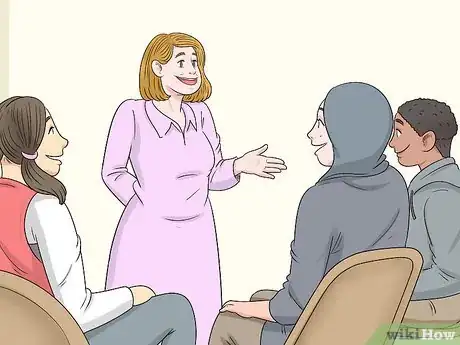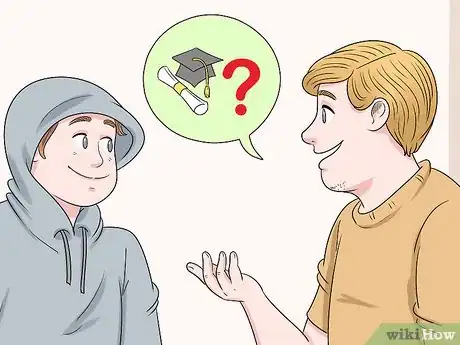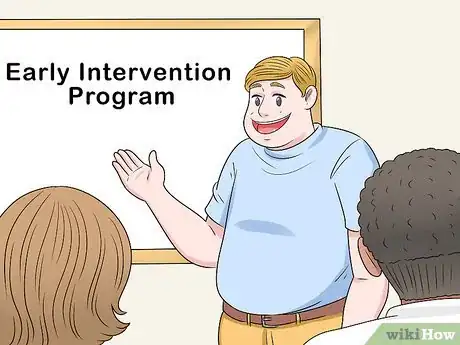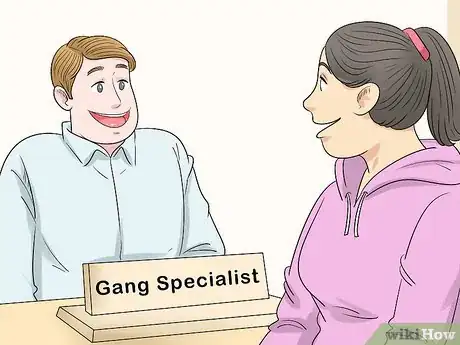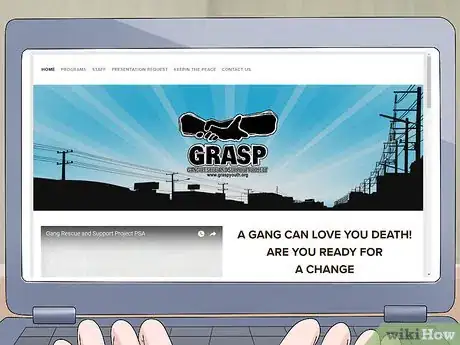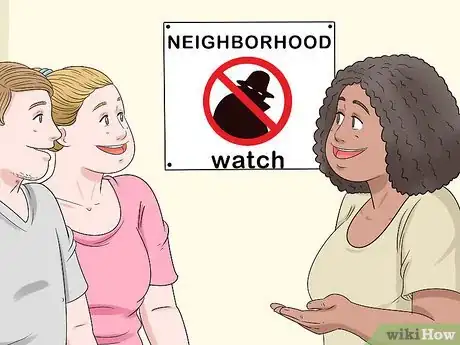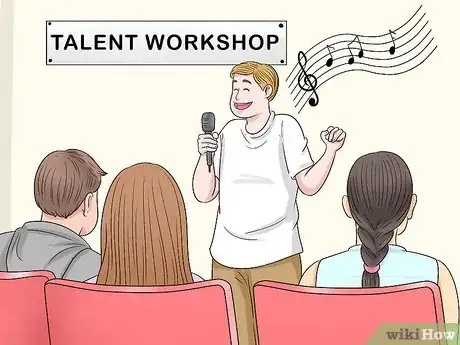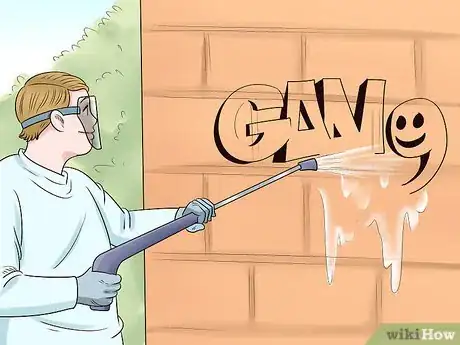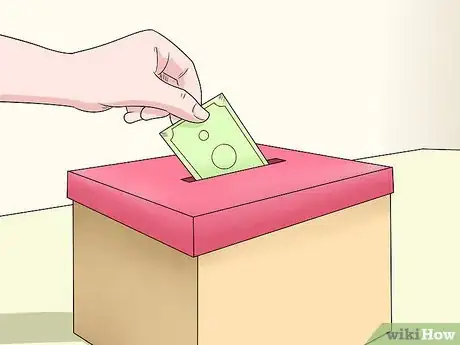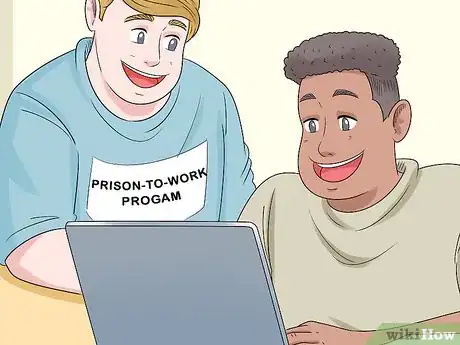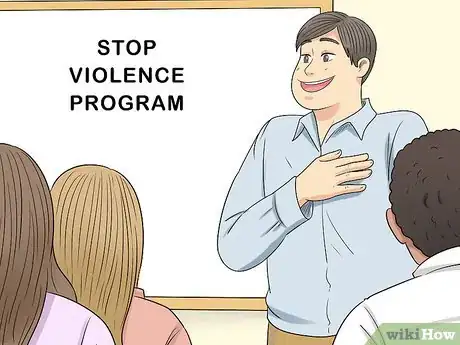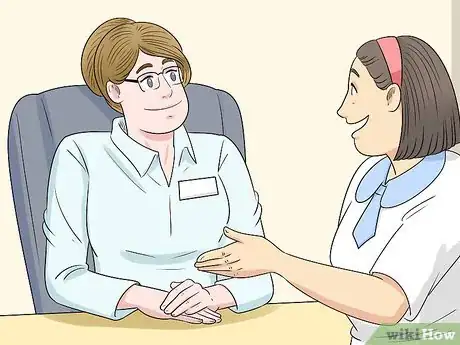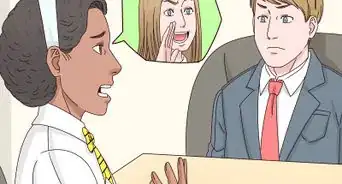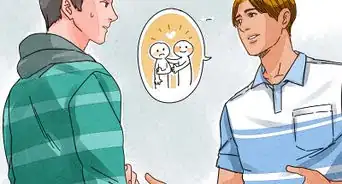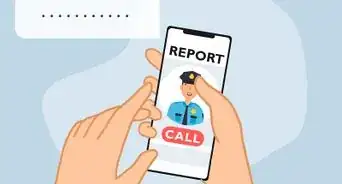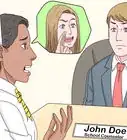This article was co-authored by wikiHow staff writer, Amber Crain. Amber Crain has been a member of wikiHow’s writing staff for the last six years. She graduated from the University of Houston where she majored in Classical Studies and minored in Painting. Before coming to wikiHow, she worked in a variety of industries including marketing, education, and music journalism. She's been a radio DJ for 10+ years and currently DJs a biweekly music program on the award-winning internet radio station DKFM. Her work at wikiHow supports her lifelong passion for learning and her belief that knowledge belongs to anyone who desires to seek it.
There are 15 references cited in this article, which can be found at the bottom of the page.
This article has been viewed 50,450 times.
Learn more...
Gang violence is a significant problem throughout the world. Young people often feel trapped by gang culture and join because they see no other way out of their present circumstances. The problem is complex and can feel impenetrable to the community it affects. By reaching out to at-risk youth to prevent gang membership, being an active community member, and promoting a gang-free lifestyle in schools, you can help fight this problem.
Steps
Preventing Gang Membership
-
1Speak with at-risk children or teenagers about gang activity. Get involved with local outreach and prevention programs to connect with at-risk youths in your area. Young people typically join gangs between the ages of 13 and 15, so you may want to focus on kids in this age range and younger. Early intervention usually has the best results.[1]
- Despite common stereotypes, girls join gangs in large numbers, too. Avoid focusing all of your efforts on young males.
- You can also communicate with kids already involved in gang activity through these channels.[2]
-
2Establish a sense of trust with at-risk youths. Talk to them about the reasons why they feel pressured to join a gang and encourage them to speak freely. Allow the kids to communicate both the frustrations and positive aspects of their lives in order to build a caring, sustainable relationship with them.
- Remain non-judgmental, encouraging, and supportive when they share personal details with you.
- Common reasons for gang involvement include financial stability, sense of support and belonging, peer status, and belief that they'll be protected if they join.[3]
Advertisement -
3Encourage the kids to create positive goals for themselves. After establishing trust, you can help them form realistic and attainable personal, educational, and career goals outside of gang involvement. Push them to think outside of and beyond their current lifestyle to show them the positive potential they have.[4]
- Ask them questions like, "Where do you want to be when you grow up?" and "What steps do you think will get you there?"
- Academic success and positive connections related to that success have shown encouraging results.[5]
-
4Create an early intervention program for at-risk youth. If your community doesn't have an early intervention program for at-risk youth, create one yourself. Focus on creating an environment for positive recreation that provides youth with the tools needed to learn interpersonal skills, such as conflict resolution.
- Programs should have classes or get-togethers specifically for parents and teachers of disruptive youth that want to learn how to manage them effectively.[6]
- Intervention programs give at-risk youth a non-judgmental environment to learn adaptive skills and provide them with a sense of community.
-
5Connect young gang members with specialists for additional help. In some cases, professional help is necessary to deal with gang activity. Specialists devote their careers to developing relationships with gang members and leaders in order to mediate violence. If the situation is very serious or feels beyond your control, consider reaching out to a gang specialist.[7]
- Gang specialists do not undermine gang members or leaders. They are not anti-gang—they are anti-violence.
- Although gang specialists support anyone's decision to leave the life, they do not try and talk members out of the lifestyle. They play a neutral role that focuses on harm reduction.
-
6Look for signs of gang affiliation on social media channels. A lot of gang activity among younger age groups now starts online, especially when it comes to trading insults and sparking violence that later plays out in the streets. Find local community groups and support networks for gang-affiliated youth and provide their contact information to people you believe would benefit from it.[8]
- For example, you could send young gang members links for programs such as GRASP (Gang Rescue and Support Project) or the Youth at Risk Development Program (YARD).
- Even if your efforts don't work or are met with hostility, take it in stride and continue your efforts.
Being an Active Community Member
-
1Register or join a neighborhood watch group. Youth are at a higher risk of engaging in delinquent behaviors when they live in communities where they feel unsafe. By creating or joining a network of civilians committed to preventing crime, you can help foster feelings of community safety and make it clear that you don't stand for gang violence.[9]
- Neighborhood Watch does not advocate taking action—they support community members aiding law enforcement by reporting crimes or suspicious behaviors.[10]
-
2Develop workshops that focus on developing positive life skills. At-risk youth need help learning how to boost self-esteem, manage anger/conflict, set realistic goals, improve personal awareness, foster healthy relationships, and value education. These programs can provide similar benefits as gangs, including a sense of identity and belonging, protection from violence, and a tight structure that mirrors that of a family.
-
3Remove graffiti from your community. Graffiti is a sign of territorial dominance. Removing these signs reduces the chances of violence between rival gangs. It also sends out the message that the community will not stand for gang activity. Some communities allow residents to help cleanup graffiti. Ask local law enforcement about how you can participate in the cleanup process.
- Graffiti removal typically involves using a wire brush to remove paint from various surfaces using a chemical graffiti remover.
- If you're removing graffiti from brick surfaces, especially red brick, professional help is recommended.[11]
-
4Connect with politicians that are committed to ending gang violence. Politicians have a wide reach, making them great ways to drive global change. Write and call members of local or non-local congress to share your personal experiences with gang activity and the positive impacts that you have made. Ask others to do the same to make it clear that you are communicating a problem that many people are collectively driven to fighting.
- If you're in the United States, search your zip code to find a local representative: https://www.house.gov/representatives/find-your-representative.
-
5Donate to programs that aid former or current gang members. For example, the Gang Rescue and Support Project (GRASP) focuses on male and female youth that are gang-involved, have substance abuse issues, a history of juvenile justice involvement, or family dysfunction or family involvement in any of the above. They use their donations to fund:
- Parent awareness training
- Community outreach
- Job training
- Crisis response
- Tattoo removal[12]
-
6Participate in prison-to-work programs. When inmates are released from prisons, they face the challenge of finding employment, which can drive them back into the criminal lifestyle. By aiding in prison-to-work programs, you can share your own work and career skills to help others choose better lifestyles.[13]
- Companies like Volunteers of America provide opportunities for people looking to help teach job-related skills to inmates in prison-to-work programs.[14]
Promoting a Gang-Free Lifestyle in Schools
-
1Volunteer to be a tutor for at-risk youth. Paying for an hourly tutor is something that some families from poorer socioeconomic backgrounds can't afford. Unfortunately, this means that many children and young adults from these communities don't get the educational help they need to succeed. Provide them with educational opportunities through volunteer tutor programs at local schools.[15]
-
2Keep your interactions positive to make an impact. Current and future gang members that are still in school often feel that the educational system has failed them. They end up disliking order and education because their experiences with the system have not been positive in the past. Provide positive experiences to counter this, and take any hostility as a challenge to overcome.
-
3Help institute school-based programs that address gang issues. Gang activity is a broad category that includes substance abuse, delinquency, and violence. Create or get involved in school-based programs that address these issues. Work with programs that establish schools as safe zones for students and reach out to students who are at risk for dropping out of school.[16]
- Academic success and positive relationships can help change the course of youth in high-risk communities.
-
4Speak to school authorities and inform them of gang activity. With so many children to keep track of, it can be difficult for school and law authorities to know which individuals and situations need immediate attention. As a member of a gang-afflicted community, you can use your role to help them maintain awareness.
- Communicate with school officials, counselors, and local law enforcement directly anytime you witness gang activity.
- Gang-involved teens give in to peer pressure when they lack positive role models. Communicating with school officials and counselors puts them in a better position to take on this role and make a positive impact.
-
5Approach gang activity in schools as a public health problem. This means monitoring trends, researching risks and protective factors, evaluating interventions, and implementing strategies with evidence-backed solutions. Take note of the strategies that work and when they are most effective. Factors such as culture, family dynamics, and past experiences can influence the effectiveness of solutions for different at-risk youth.[17]
- For example, if confrontational approaches promote hostility in some youth, ask yourself why and examine the alternative solutions.
References
- ↑ https://www.cdc.gov/violenceprevention/youthviolence/preventgangmembership/index.html
- ↑ http://www.lapdonline.org/get_informed/content_basic_view/23475
- ↑ https://www.cdc.gov/violenceprevention/youthviolence/preventgangmembership/index.html
- ↑ https://www.edutopia.org/strategies-help-at-risk-students
- ↑ https://www.cdc.gov/violenceprevention/youthviolence/preventgangmembership/index.html
- ↑ https://youth.gov/feature-article/gang-prevention-overview-research-and-programs
- ↑ https://www.peacebuilding.uci.edu/files/docs/2013/gang_intervention_specialists.pdf
- ↑ https://www.bostonmagazine.com/news/2013/09/27/social-media-and-gang-violence-study-twitter/
- ↑ https://youth.gov/feature-article/gang-prevention-overview-research-and-programs
- ↑ https://www.nnw.org/about-neighborhood-watch
- ↑ https://www.cambridgema.gov/theworks/ourservices/streetcleaning/graffitiremoval/toolsandtechniquesforremovinggraffiti
- ↑ http://graspyouth.org/
- ↑ https://newsone.com/478852/six-ways-to-stop-inner-city-crime-waves-this-summer/
- ↑ https://www.voa.org/volunteer
- ↑ https://www.ncjrs.gov/pdffiles1/ojjdp/231116.pdf
- ↑ https://www.cdc.gov/violenceprevention/youthviolence/preventgangmembership/index.html
- ↑ https://www.cdc.gov/violenceprevention/youthviolence/preventgangmembership/index.html
- ↑ http://respectrichmond.com/gang-signs/
- ↑ https://www.ncbi.nlm.nih.gov/pubmed/10029043
